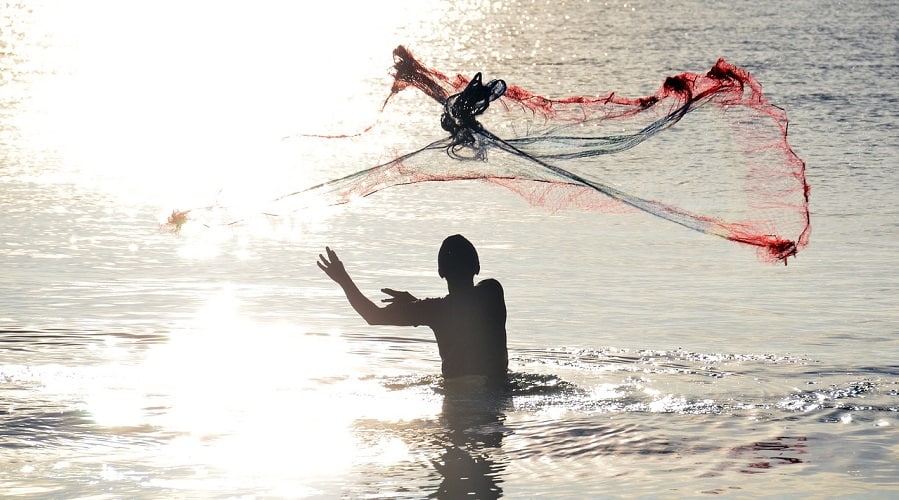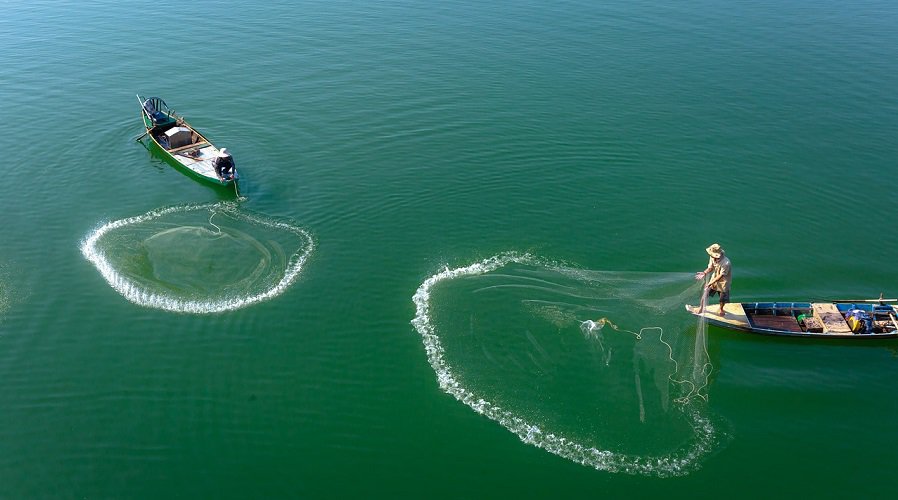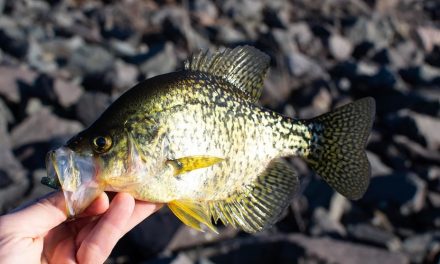It’s somewhat funny how things come and go in this world. Casting nets were a popular choice for anglers for about 10,000 years, and then became unfashionable for a while. Recently, cast net fishing has been experiencing something of a comeback, thanks to nets being more available, and some exposure on various television programs. The good old cast net is back and plenty of people are developing an interest. If you’re one of those people, here’s a short list of things to keep in mind during the early stages of your net fishing career.
1. Plan Ahead a Little

Image credits: Anke Sundermeier via Pixabay
Browsing the web, you’ll undoubtedly notice that cast nets aren’t exactly expensive items to obtain. You can get new ones starting at about $20 and shipping costs more than the used nets available. Even so, unless you like having nets you don’t use piled up, you’ll want to take notice of a few things and know what kind of fishing you want to do before you buy.
2. Know the Numbers
The number listed with the net in feet is the diameter of the net. So, a cast net with a six-foot radius, when thrown with proper technique, will expand to 12 feet when it’s all spread out. Common sizes for cast nets are between three and 10 feet radius for baitfish. If possible, you’ll want to take notice of the gauge or test of the net material. Bigger stuff is for bigger fish, smaller stuff for smaller fish.
3. Know Your Target
Nevertheless, if you only want to catch bait fish, you can get by with a pretty small, pretty flimsy net. If you wish to try your hand at something bigger, with more fight, you’ll be requiring a more robust rig. If only bait fish are on the agenda, there’s no reason to go packing around a net big enough to bring in a tarpon.
4. Get Some Practice

Image credits: Quang Nguyen vinh via Pixabay
The backyard is probably the best place to sneak in some practice with your new net before actually hitting the lake. Clear out the lawn furniture and take a few whacks at tossing the net consistently and practice pulling it in. Oh, don’t practice on the cat. It causes a snarl like you can’t imagine.
5. Know the Law
Once you’ve got your shiny new net, you’ll want to take a minute and make sure that it is legal to net fish in whatever body of water you’re hoping to fish in. Not all localities allow net fishing, and some that do will only let you go after certain species. Read up on it before you toss your net.
6. Bring Some Waders
One of the first things you learn about nets is that they have a tendency to hook on anything and everything. When you go out net fishing, there is a strong likelihood that you will be wading out to unsnap the net several times. Planning ahead can save you a lot of frustration.
7. Watch Your Fingers
Whatever you catch in a net must be removed from the net at some point. If you’ve got countless minnows in there, it’s no big deal. Unsnarling an upset northern pike or a muskie is a different story. A lot of fish possess very pointy teeth, so watch yourself.

Image credits: Quang Nguyen vinh via Pixabay
Whatever you catch in a net must be removed from the net at some point. If you’ve got countless minnows in there, it’s no big deal. Unsnarling an upset northern pike or a muskie is a different story. A lot of fish possess very pointy teeth, so watch yourself.
8. Watch Your Footing
Nets get a lot heavier once they’re wet, and heavier once again when they’re full of fish. You might have had no trouble purchasing a net, but when you toss the net in and then haul it out; it’s a much different story. Here’s a pointer, be careful regarding where you stand and how muddy the bank is.
9. Know Your Limits
Some net fishing is relatively easy, some isn’t. Throwing a net properly takes a fair amount of oomph, and dragging them back in gets to be a real drag (no pun intended) after a few hours. Don’t overdo it the first few times out.
10. Don’t Drown
Yeah, it might sound like a no-brainer, but don’t drown. Extreme caution needs to be exercised when you wade out to unsnarl or retrieve a net. It’s easier than you might imagine getting tangled, losing your footing, or ending up in your own darn net. Be wary and don’t get complacent. Nobody ever intends to drown, but many people do every year.
A Final Thought
If you’re thinking of giving net fishing a try, you should. It is an ancient and thoroughly entertaining type of fishing that only becomes more fun the more you do it. It’s also about the only type of fishing where you can completely outfit yourself for about $20. That is, if you don’t count the waders or willingness to sacrifice a pair of jeans to the cause.






 E-Newsletter
E-Newsletter